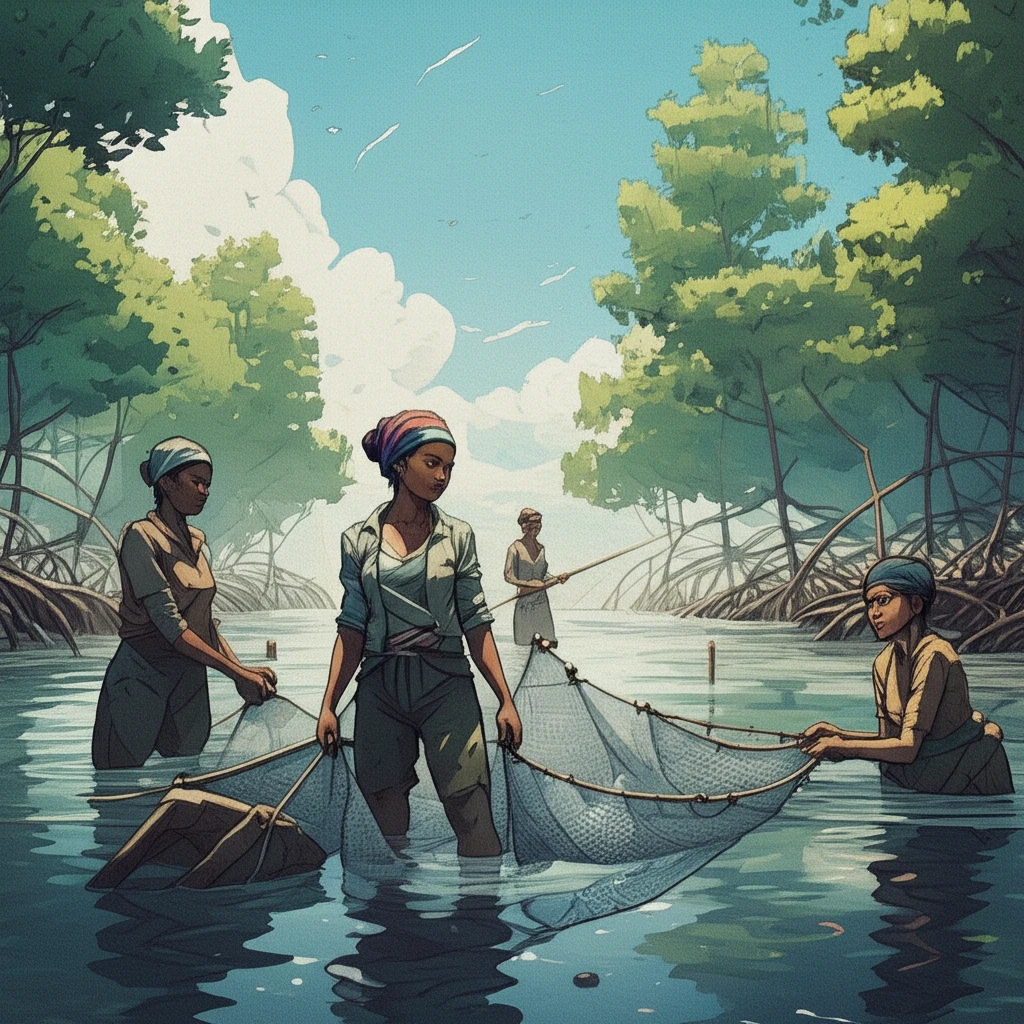
Coastal Women: The Unseen Force in Fishing and Conservation
"Exploring the vital role of women in the Mamanguape River Estuary's fishing economy and environmental preservation."
Mangrove-estuary ecosystems are vital transition zones connecting freshwater and marine environments. These areas, rich in biodiversity, not only support intricate food webs but also serve as crucial resources for local human communities. Mangroves provide lumber, dyes, and an abundance of fishes, crustaceans, and mollusks, all essential for the subsistence of those who live nearby.
Within these communities, the family unit is key. All members actively participate in fishing activities, ensuring both survival and extra income. Women play a particularly significant role, engaging in income-generating activities that are directly linked to the use and management of natural marine resources. Their involvement highlights the intersection of productive processes and environmental dynamics.
Understanding how women manage these environments is crucial for sustainable practices. This article explores the appropriation and use of fishing resources by women residing near the Mamanguape River Estuary (MRE) in Paraíba, Brazil, shedding light on their essential contributions to both the local economy and environmental conservation efforts.
Women's Roles in the Mamanguape River Estuary

A study was conducted in the Mamanguape River Estuary (MRE) to evaluate how women utilize fishing resources. Researchers combined qualitative methods, such as interviews and direct observations, with quantitative methods, like use value calculations. Thirty women were interviewed, revealing their use of 41 different species: 30 fish, 8 crustaceans, and 3 mollusks. These resources are primarily used for local consumption and sale, highlighting their economic and nutritional importance.
- Economic Contribution: Women actively participate in fishing, ensuring family survival and generating income.
- Resource Diversity: They utilize 41 species, demonstrating extensive knowledge of the local ecosystem.
- Conservation Impact: Their practices are vital for maintaining the balance of mangrove ecosystems.
- Policy Implications: Data supports the formulation of inclusive environmental policies.
Empowering Women for a Sustainable Future
The study highlights the indispensable role women play in the fishing economy and conservation of the Mamanguape River Estuary. By recognizing their contributions and promoting their equal participation, we can foster more effective and sustainable environmental policies. Supporting these women not only sustains their families and communities but also ensures the long-term health and resilience of this vital ecosystem, safeguarding it for future generations.
